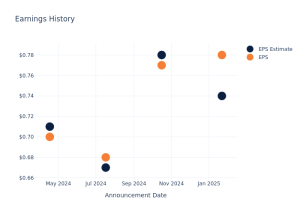Hit-and-run accidents can be traumatic, whether you experience the collision or you find your car dented in a parking lot.
Unfortunately, these crashes are not uncommon. The National Highway Traffic Safety Administration reported 2,932 fatal hit-and-run accidents in 2022, the most recent year data is available.
If you’re a victim in a hit-and-run, you’re probably feeling shock and confusion about what to do next. This guide explains what constitutes a hit-and-run accident, how to react when you’re involved in one, and how your car insurance can help.
Learn more: What to do after a car accident: Your step-by-step guide
Nolo, the nonprofit legal aid website, said state laws typically define a hit-and-run as a failure to:
Every state has laws defining who is responsible for stopping during an accident. In most states, fleeing the scene after being involved in an accident, without providing contact information, can qualify as a hit-and-run. This applies regardless of fault or the severity of the incident.
Learn more: How much does car insurance increase after an accident?
Here are the steps to take if someone hits your car and leaves without sharing contact information.
Step 1: Stop your car and assess the situation
If you are still driving, pull over away from traffic and make sure you and your passengers are safe. Call emergency services immediately to report any injuries and request help.
Resist the urge to follow a hit-and-run driver who takes off after a collision. Chasing the other driver may leave you liable for leaving the scene of an accident, so stay put. Write down any information you can remember, such as the other vehicle’s color, make, and model.
Call law enforcement immediately, even if the accident happened in a parking lot or the damage seems minor. You will want to file a police report because it can help you with a hit-and-run insurance claim.
Look around the scene for potential witnesses. If there are storefronts nearby, ask employees if they saw anything or if their stores have security cameras. Eyewitness accounts and video footage could be critical in identifying the other driver. Collect the contact information of anyone who saw the accident or knows of available footage. Provide these details to the police when they arrive.
Never leave the scene of an accident, especially one where the police have been called until you’ve spoken to an officer and they’ve said you can head home. They may need additional information, photos, dashcam footage, or input from your passengers.
You should report an accident to your insurance company as soon as possible. Your insurance company may also be able to help coordinate towing your car to a shop or arranging a rental car, depending on your coverage.
In a typical accident, the at-fault driver’s insurance usually covers the cost of medical expenses (except in no-fault states), property damage, and vehicle repairs for everyone involved. However, fault is more difficult to determine in a hit-and-run accident. Whether the hit-and-run driver provided incorrect information, left a note, or fled the scene immediately, your insurance company and the police may need time to sort out who was at fault and how the applicable insurance policies can be applied.
For instance, California has a comparative negligence law, which means that each driver’s degree of responsibility for fault in an accident will be equally considered, even if one driver leaves the scene.
Circumstances and your policy limits dictate which type of coverage might apply in a hit-and-run accident.
Even if the other driver is never found, you can make a claim if you have collision coverage. Collision coverage pays to repair your vehicle after a crash. If you make a collision claim you’ll be responsible for paying your deductible toward repairs.
There are two types of uninsured motorist coverage that may apply to a hit-and-run accident:
-
If you or your passengers were injured in the hit-and-run you can likely make a claim against your uninsured motorist bodily injury coverage.
-
If your vehicle was damaged, you may be able to make a claim against your uninsured motorist property damage coverage (UMPD), if you have it, in some states. If you don’t have UMPD you could instead use your collision coverage.
Medical payments coverage pays medical bills resulting from an auto accident, regardless of fault. If the hit-and-run caused injury to you or your passengers, your Medpay coverage can help with the costs.
Personal injury protection (PIP) coverage pays for medical and funeral expenses, lost wages, and replacement service for tasks you can’t perform because of accident injuries, such as childcare. PIP is available only in some states but can be claimed regardless of accident fault.
If insurance does not cover all your medical costs, you may be able to get financial assistance from your state’s crime victim compensation program. Consult the National Association of Crime Victim Compensation Boards for more information.
Do you have to pay your deductible for a hit-and-run insurance claim?
If the coverage that applies to your hit-and-run claim has a deductible, you will have to pay it.
Ezra Peterson, vice president of insurance at Way.com, explained, “Deductibles for each specific coverage type function the same for a hit-and-run claim as they would for any claim filed against the insured’s policy, wherein the net amount of payout for the loss is the repair/reimbursement/settlement cost, less the amount of the deductible for that coverage type.”
Collision insurance has a deductible. Uninsured motorist coverage may have a deductible depending on your state’s laws. The same is true for PIP. MedPay coverage typically has no deductible.
When in doubt, ask your insurance agent or a company representative about any deductibles that apply to your hit-and-run claim.
Read more: What you need to know about car insurance deductibles
Will a hit-and-run claim impact your insurance?
Because a hit-and-run wasn’t your fault, you’re unlikely to get an insurance rate increase due to a claim from the accident. Peterson said, “Although the overall rate impact varies from state to state, generally speaking, these claims are treated the same as any non-at-fault accident.
If you’ve been the victim of a hit-and-run, here are three things to consider.
It’s likely not worth filing a claim if the repair costs are less than your collision insurance deductible.
Filing a hit-and-run claim can require more paperwork than your average claim, so be sure you’ve gathered all the information that might be required. Your insurance company may ask for:
-
Time, date, and location of the collision
-
A police report detailing the incident
-
A description of the other vehicle and driver
-
Photos of damage
-
Pictures or video footage of the incident or the hit-and-run vehicle
-
Name and contact information of any eyewitnesses
Because hit-and-run claims can take time to sort out, you’ll want to start the process as soon as possible. In most states, car insurance companies have about 30 days to investigate and resolve claims.
The consequences for hit-and-run drivers range in severity.
The minimum outcome for a driver caught after a hit-and-run will likely be higher insurance rates, plus penalties and fines assessed by the state. A misdemeanor hit-and-run typically carries a sentence of six months jail time and a $1,000 fine. A court may also require hit-and-run drivers to file an SR-22 statement of financial responsibility. A felony charge for hit-and-run can lead to a year in jail, thousands in fees and damages, and possibly a driver’s license suspension.
This article was edited by Amy Danise.
Catherine Brock contributed to this article.


